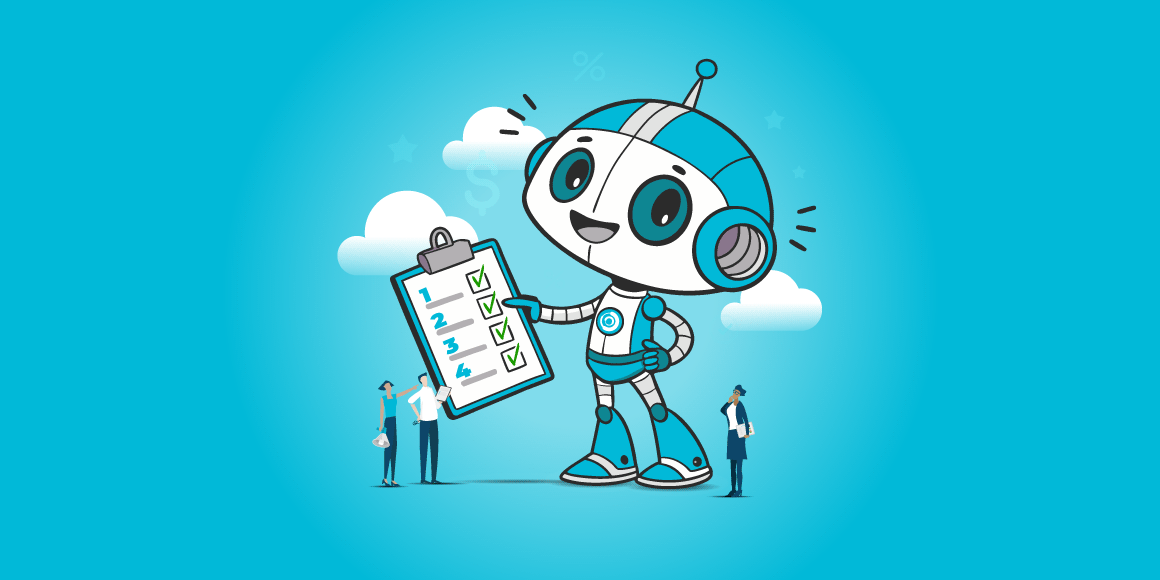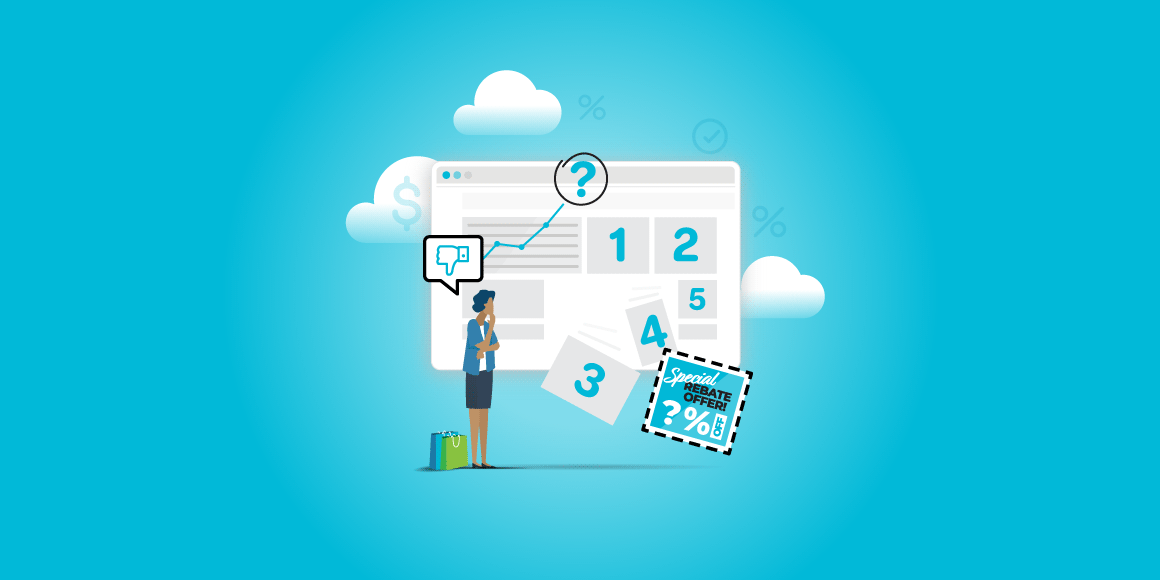Consumer rebate and cashback programs have long been a favorite incentive tool for businesses. Why? Among other things, they can boost sales, drive customer acquisition, and build brand loyalty. But that’s not all. When you pull this incentive “lever”, you can also influence buying decisions without lowering list prices, while gathering potentially valuable customer data in the process.
However, there’s a catch. For all their strategic benefits, consumer rebate programs can also be notoriously difficult to manage. Without automation, they may quickly become a source of frustration for both customers and internal teams. Paper forms, spreadsheet chaos, delayed payments, and endless support tickets can turn an incentive into a liability. These inefficiencies lead to “revenue leakage”, in many cases costing businesses millions of dollars in revenue each year.
Fortunately, automation can mitigate or even eliminate most of these challenges. The key is to integrate it at crucial touchpoints in your rebate process. Let’s take a look at four of these touchpoints, and how to make each one smoother, faster, and more efficient through automation.
Touchpoint 1: Enrollment
The Pain: Manual Form Entry & Poor User Experience
The rebate journey begins with enrollment—and in many cases, this is where the pain begins. If customers are forced to complete lengthy mail-in paper forms or clunky online submissions, drop-off rates rise. Manual form entry can also lead to incomplete or incorrect data, causing delays or disqualification. This is not a recipe for producing happy customers.
On the backend, teams are left chasing down missing information and re-keying data into CRM systems. If your organization deals with thousands of these rebates annually, you can imagine the time and productivity lost to manual inputs during this touchpoint.
Automation Tip: Digital Forms with Validation + CRM Integration
Smart rebate programs start with streamlined enrollment. A well-designed digital form with real-time validation (like auto-formatting phone numbers or flagging missing fields) makes the process faster and error-free for the customer.
When integrated with your CRM or rebate platform, these forms can instantly populate customer records and trigger next steps in the workflow. No manual data entry. No information gaps. Just clean, actionable data flowing into your system from the start.
Touchpoint 2: Tracking
The Pain: Status Confusion
Once a customer submits their rebate, they are often left playing the dreaded “waiting game”. Was my rebate submitted successfully? How long is the review process? Will it be accepted? How will I know?
If there’s no way for them to check their status, they’ll resort to calling or emailing support. Multiply that by hundreds or thousands of customers, and it’s easy to imagine your team quickly becoming overwhelmed. Meanwhile, customers are left frustrated and in the dark. It’s a lose-lose.
Automation Tip: Real-Time Dashboards + Auto-Updates to Customers
Fortunately, you can eliminate status confusion with a self-service rebate tracking portal. Empowering customers to check the status of their own submissions gives them a sense of agency over the process. In fact, a recent consumer survey found that more than 2/3 of customers actually prefer self-service opportunities versus speaking to a company rep.
With consumer rebates, this can be achieved with a simple customer dashboard that shows real-time progress updates, such as “submitted,” “under review,” “approved,” or “paid”. This simple enhancement can dramatically reduce customer service tickets and improve program transparency.
This is what customers want. What’s more, digital transparency has been shown to enhance consumer trust, and a customer that trusts your business is more likely to become a repeat customer.
In addition to dashboards, you can set up automated notifications that keep customers informed at key milestones. Whether it’s via email or SMS, these sorts of proactive updates can also reduce inquiries and build the aforementioned trust. All of this helps to create a positive feedback loop—which we refer to as the “loyalty loop”—in which you demonstrate your brand’s ongoing commitment to truly valuing CX.
Touchpoint 3: Reconciliation
The Pain: Disparate Systems & Spreadsheet Chaos
Reconciling rebate claims with purchase data, financial records, and compliance requirements is often another chokepoint where rebate programs get bogged down. Teams across marketing, finance, operations, and country departments may be using different systems, creating friction that makes it difficult to validate claims or track the full lifecycle of the purchase and rebate. As the volume of rebates grows, so does the likelihood of error.
Automation Tip: Connect Claims to ERP/Accounting Systems
But reconciliation doesn’t have to be a manual, spreadsheet-driven nightmare. If you can integrate your rebate platform with automated ERP (Enterprise Resource Planning) and accounting tools, you can create a single source of truth. This is crucial when sharing information across departments.
Automated workflows can match claims against transaction data in real time, flag anomalies for review, and generate reports that support audit-readiness. This not only accelerates payout timelines but also ensures accuracy and compliance with internal controls.
Touchpoint 4: Payment
The Pain: Delays, Compliance Risk & Customer Frustration
Finally, even if everything else goes smoothly, delays in payment processing can ruin the rebate experience for consumers. They expect rebates to arrive quickly, and when they don’t, trust erodes and frustration mounts. Manual payment processing creates bottlenecks and compliance risks—especially when eligibility criteria or payout amounts vary by product or geography.
Automation Tip: Rules-Based Disbursement Engine
A rules-based, automated disbursement engine can take all the complexity out of rebate payments. By codifying your program rules—such as eligibility criteria, payment timing, payout method, and country requirements—the system can automatically calculate and issue payments without human intervention.
One way to streamline this is to offer multiple digital payment options like ACH transfers, virtual prepaid cards, or digital wallet payments to match customer preferences. After all, more than 90% of U.S. consumers are making digital payments of some kind, leading to a rise in expectations for their payments UX. And in 2024, e- commerce accounted for almost 20 percent of the enterprises‘ revenue in the European Union. With multiple options that are automated, you ensure that the right amount goes to the right person in a timely manner—every time.
Conclusion: Automating the Full Lifecycle = Happier Customers, Less Overhead
Every rebate touchpoint—enrollment, tracking, reconciliation, and payment—offers a chance to create a positive brand interaction. But when these steps are manual, they create friction that frustrates customers and strains internal teams.
Automation can mitigate many of these challenges. Whether it’s through digital forms, integrated systems, real-time updates, or intelligent disbursement, your rebate program, when automated, becomes optimized for engagement and loyalty, rather than a drain on your resources.
Even if it isn’t a silver bullet for all of your consumer rebate challenges, automation can end up being a strategic solution that’s worth its weight in gold.
Is every key touchpoint in your consumer rebates program automated? Would you like to learn how to optimize each stage in your program? Contact us to find out how.






